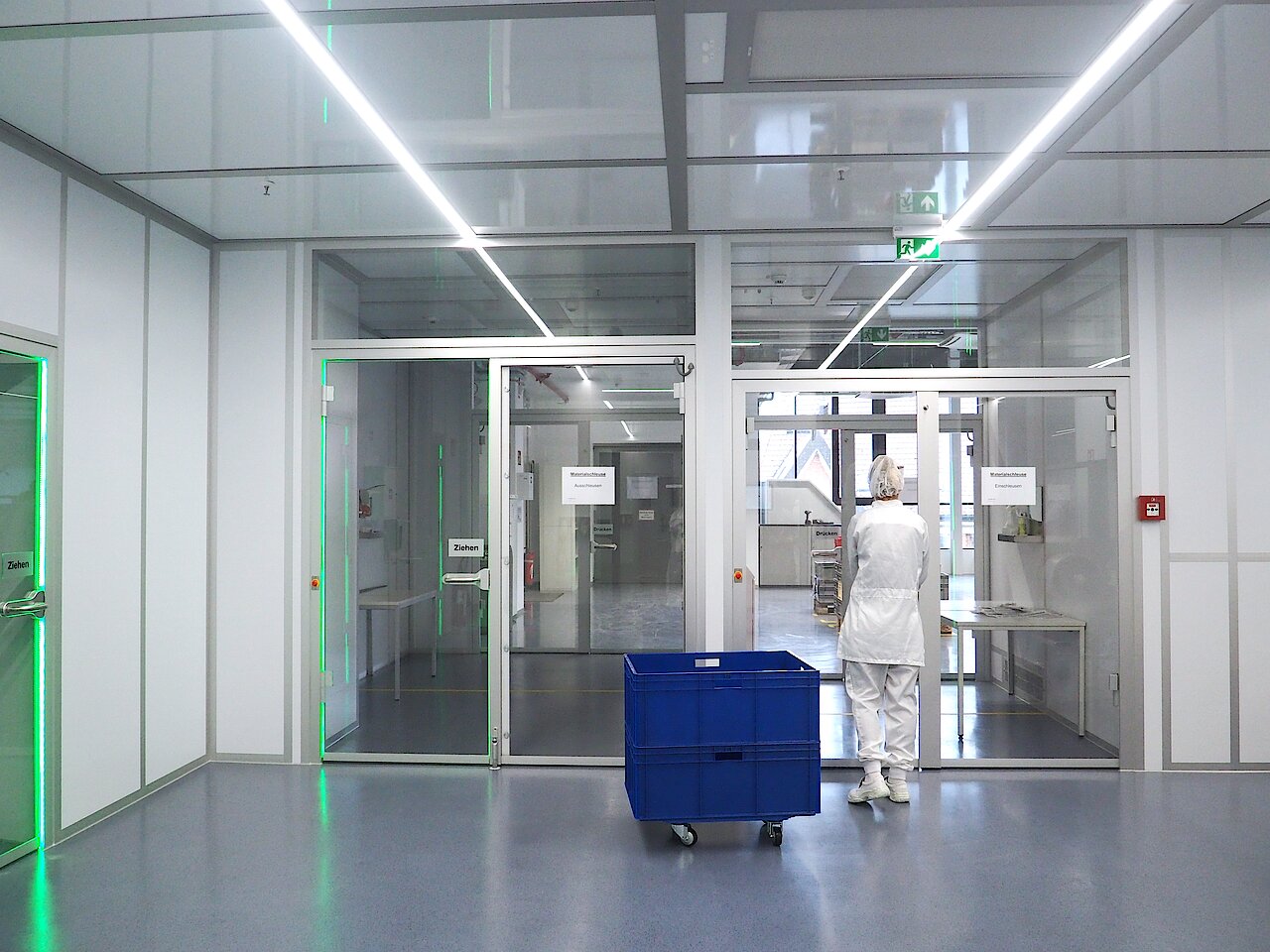This means that the air pressure through the airlock into the cleanroom is gradually higher. This prevents particles or microorganisms from the ambient air from entering the cleanroom. However, this requires that only one door of the airlock can be opened at a time (mutual interlocking). As in the cleanroom itself, the air quality in the airlock is also monitored to prevent contamination of products, processes or the cleanroom itself. Purging with filtered air can either be active with its own filter systems or passive as an overflow from the higher-pressure room into the airlock. Unfortunately, the importance of airlocks is often underestimated, even though they are the key to the safe operation of a cleanroom. This applies not only to the entry of personnel, but also to the materials used.
The products that are processed, measured, packaged or assembled in the cleanroom must enter the cleanroom "risk-free". The airlocks used for this purpose are very diverse. From small material pass-throughs (also a type of material airlock) for manual materials to large rooms for heavy machines, components or large handling volumes. The requirements are as individual as our customers' products. Material airlocks, which are designed as independent walk-in rooms, usually have one thing in common: they have automatically opening doors or roller shutters to keep the process flow flowing smoothly.
What cleanliness class must a material airlock have?
Once the airlock has been loaded, the rinsing process begins to raise the cleanliness level to that of the cleanroom. During this time both doors are locked. It is therefore important that the material airlock has the same cleanroom class as the cleanroom itself when it is purged.
Purge is performed with filtered air. Material airlocks are not normally air conditioned, except in special cases where this is necessary for risk-based process reasons.
How are materials brought into the cleanroom?
Outer packaging that causes contamination, such as wood, cardboard or paper, must be removed outside the airlock. The outer plastic packaging is then wiped down with a suitable cleaning agent. In this condition, the material is fed into the airlock from the outside and then out again. The person in cleanroom garments enters the airlock from the clean side, removes the first plastic packaging and takes the material into the cleanroom. The final packaging should not be removed until the material is ready for use. Note that all transport equipment entering the cleanroom must also be cleaned in the airlock.
Bringing large machines into the cleanroom?
What if you occasionally need to replace a machine in the cleanroom, or you want to add a machine at a later date?
Well, it depends on the frequency. In most cases, it does not make sense to equip the (material) airlock for this purpose, as it is very expensive and takes up a lot of space, or the future size cannot be determined at the time of installation. In this case we usually install some opening wall elements. The cleanroom must then be taken out of service for the period of opening and installation and then re-qualified. However, this effort is usually disproportionate to the cost of a very large material airlock that would have to be provided for this purpose.
Storing material in the material lock?
It is also important to note at this point that the airlock is not a warehouse!
A material airlock is a very expensive storage room and is not intended to be used as such. An airlock is basically just a transit area; the material can wait outside. 😉
